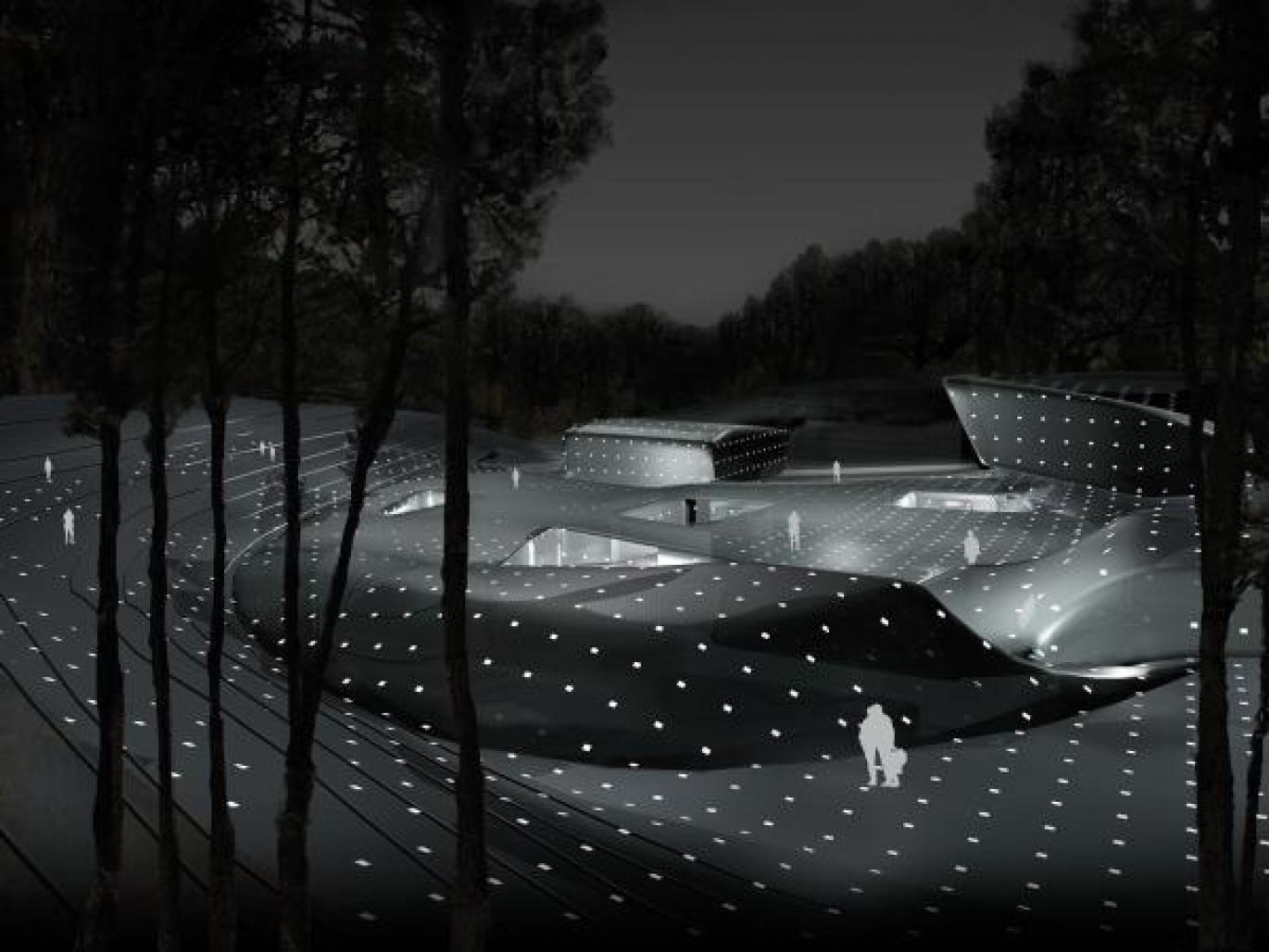Nam June Paik and his interest for nature and technology inspired us to bring nature and technology into a reciprocal presupposition, where one topic influences the other and vice versa. The building is transformed, generated and dissolved by nature and technology. Instead of defining an opposition between these two issues the project is about the discovery of their interaction.
Situated in the cultural park of Sanggal, the museum is part of a cultural landscape of various institutions, added to the International Centre of Culture and Art in the Province of Kyonggi. Out of the special demands of the museum, the content and the context, we proposed a museum that fluctuates between building, topography and interface.
The building consists of a single volume that is transformed by the topography, the program and a media surface. This single volume is integrated into and shaped by the landscape; it is only partially revealed to the outside. The volume provides a new landscape and adopts the qualities and conditions of the existing landscape. To accommodate the program, the volume is shaped, distorted and manipulated, it extrudes out of the landscape and leaves openings where the landscape enters the volume. Inside the single volume we established a network of functions with the most important programs as nodes. These nodes are located in the public part of the museum and will be embraced by a service zone at the perimeter of the volume.
The basic idea for the structure of the single volume is a slightly distorted three-dimensional steel-frame-grid. Straight beams with individually shaped connection points form the distorted 2.5-metre-grid of the volume. A secondary sub-grid creates the skin with 60 cm thickness accommodating the steel structure, air condition, sprinkler ducts and the electrical system. Therefore the skin works as the single volume adapting to the local demands.
A continuous field of monitors is seamlessly inserted in the surface of the existing nature and the artificial landscape. This media surface transforms the landscape into a spatial interface, creating an interspace as an entrée to the Nam June Paik Museum.
2003






